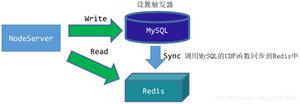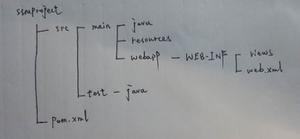redis中如何存储java对象

根据redis的存储原理,Redis的key和value都支持二进制安全的字符串
1.利用序列化和反序列化的方式
存储java对象我们可以通过对象的序列化与反序列化完成存储于取出,这样就可以使用redis存储java对象了
a.利用jdk自带的序列化机制,但效率不高
步骤:创建一个序列化和反序列化的工具类
public class SerializeUtil { public static byte[] serialize(Object object) {
ObjectOutputStream oos = null;
ByteArrayOutputStream baos = null;
try {
//序列化
baos = new ByteArrayOutputStream();
oos = new ObjectOutputStream(baos);
oos.writeObject(object);
byte[] bytes = baos.toByteArray();
return bytes;
} catch (Exception e) {
}
return null;
}
public static Object unserialize(byte[] bytes) {
ByteArrayInputStream bais = null;
try {
//反序列化
bais = new ByteArrayInputStream(bytes);
ObjectInputStream ois = new ObjectInputStream(bais);
return ois.readObject();
} catch (Exception e) {
}
return null;
}
}
b.利用谷歌的序列化依赖,高效,使用于秒杀等业务场景
<!--prostuff序列化依赖 -->
<dependency>
<groupId>com.dyuproject.protostuff</groupId>
<artifactId>protostuff-core</artifactId>
<version>1.0.8</version>
</dependency>
<dependency>
<groupId>com.dyuproject.protostuff</groupId>
<artifactId>protostuff-runtime</artifactId>
<version>1.0.8</version>
</dependency>
@Slf4jpublic class RedisDao {
private final JedisPool jedisPool;
private RuntimeSchema<Seckill> schema = RuntimeSchema.createFrom(Seckill.class);
public RedisDao(String ip, int port) {
jedisPool = new JedisPool(ip, port);
}
public Seckill getSeckill(Long seckillId) {
Jedis jedis = null;
try {
jedis = jedisPool.getResource();
String key = "seckill:" + seckillId;
byte[] bytes = jedis.get(key.getBytes());
if (bytes != null) {
Seckill seckill = schema.newMessage();
ProtostuffIOUtil.mergeFrom(bytes, seckill, schema);
return seckill;
}
} catch (Exception e) {
log.error(e.getMessage(), e);
} finally {
if (jedis != null) {
jedis.close();
}
}
return null;
}
public String putSeckill(Seckill seckill) {
Jedis jedis = null;
try {
jedis = jedisPool.getResource();
String key = "seckill:" + seckill.getSeckillId();
byte[] bytes = ProtostuffIOUtil.toByteArray(seckill, schema, LinkedBuffer.allocate(LinkedBuffer.DEFAULT_BUFFER_SIZE));
Integer timeout = 60 * 60;
String result = jedis.setex(key.getBytes(), timeout, bytes);
return result;
} catch (Exception e) {
log.error(e.getMessage(), e);
} finally {
if (jedis != null) {
jedis.close();
}
}
return null;
}
}
方法2:将java对象转换为json字符串,利用json与java对象之间可以相互转换的方式进行存值和取值
以上是 redis中如何存储java对象 的全部内容, 来源链接: utcz.com/z/392259.html






